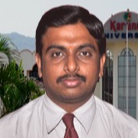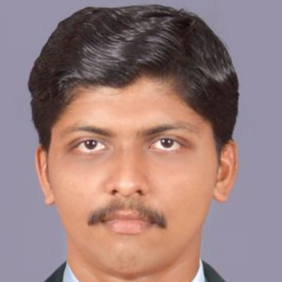International Journal of Intelligent Systems and Applications (IJISA)
IJISA Vol. 5, No. 7, 8 Jun. 2013
Cover page and Table of Contents: PDF (size: 823KB)
Simulation of High Step-Up DC–DC Converter for Photovoltaic Module Application using MATLAB/SIMULINK
Full Text (PDF, 823KB), PP.72-82
Views: 0 Downloads: 0
Author(s)
Index Terms
AC Module, Coupled Inductor, High Step-Up Voltage Gain, Single Switch
Abstract
As per the present scenario lot of power shortages are there in all over the world especially country like India the grid transferring problem is also high. Almost the power from the fossil fuels are becoming so less some of the examples of the fossil fuels are (coal, lignite, oil, and gases).So most of them looking in forward for the power from green or renewable based energies like solar, wind, biomass, tidal etc. Which does not cause any pollution to the environment. In this paper the simulation and analysis of the PV panel and also high efficient boost converter design and simulation is also performed. Even though the solar based systems are renewable based energies when compared to other renewable energies like wind, biomass it does not connect to more number of grid connections. Lot of necessary steps want to be taken one of the main important factor that high efficient boost converter is needed, here in this paper the input voltage to the boost converter is given as 15V and receives the output voltage of 55.64V
Cite This Paper
S.Daison Stallon, K.Vinoth Kumar, S.Suresh Kumar, Justin Baby, "Simulation of High Step-Up DC–DC Converter for Photovoltaic Module Application using MATLAB/SIMULINK", International Journal of Intelligent Systems and Applications(IJISA), vol.5, no.7, pp.72-82, 2013. DOI:10.5815/ijisa.2013.07.10
Reference
[1]T. Shimizu,K.Wada, andN.Nakamura, "Flyback-type single phase utility interactive inverter with power pulsation decoupling on the dc input for an ac photovoltaic module system," IEEE Transactions on Power Electronics., 2006, 21(5) :1264–1272.
[2]C. Rodriguez and G. A. J. Amaratunga, "Long-lifetime power inverter for photovoltaic ac modules," IEEE Transactions on. Industrial Electronics, 2008, 55(7): 2593–2601.
[3]S. B. Kjaer, J. K. Pedersen, and F. Blaabjerg, "A review of single-phase grid-connected inverters for photovoltaic modules," IEEE Transactions on Industrial. Applications., 2005, 41(5) :1292–1306.
[4]B. Axelrod, Y. Berkovich, and A. Ioinovici, "Switched-capacitor/ switched-inductor structures for getting transformerless hybrid dc–dc PWM converters," IEEE Transactions on Circuits Systems. 2008, 55(2) : 687–696.
[5]H. Chung and Y. K. Mok, “Development of a switched-capacitor dc–dc boost converter with continuous input current waveform,” IEEE Transactions on. Circuits Syste 1999, 46(6), : 756–759.
[6]T. J. Liang and K. C. Tseng, “Analysis of integrated boost-flyback step-up converter,” IEE Proceedings of Electrical Power Applications., 2005, 152(2) : 217–225.
[7]Q. Zhao and F. C. Lee, “High-efficiency, high step-up dc–dc converters,” IEEE Transactions on Power Electronics, 2003, 18(1) : 65–73.
[8]M. Zhu and F. L. Luo, “Voltage-lift-type cuk converters: Topology and analysis,” IET Power Electronics., 2009, 2(2): 178–191.
[9]R. J.Wai, C. Y. Lin, R. Y. Duan, and Y. R. Chang, “High-efficiency dc–dc converter with high voltage gain and reduced switch stress,” IEEE Transactions on. Industrial. Electronics., 2007, 54(1) : 354–364.
[10]S. M. Chen, T. J. Liang, L. S. Yang, and J. F. Chen, “A cascaded high step-up dc–dc converter with single switch formicrosource applications,” IEEE Transactions on Power Electronics., 2011, 26(4) :1146–1153.
[11]L. S. Yang and T. J. Liang, “Analysis and implementation of a novel bidirectional dc–dc converter,” IEEE Transactions on. Industrial Electronics., 2012, 59(1):422–434.
[12]W. Li and X. He, “Review of non-isolated high-step-up dc/dc converters in photovoltaic grid-connected applications,” IEEE Transactions on. Industrial. Electronics., 2011, 58(4) : 1239–1250.



